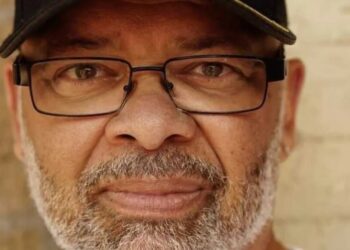
Everyone has their version of the American Dream. For some, it’s to be rich or famous or become president. For others, it’s to go to college, get a good job, buy a house. It is the belief that anyone — if they work hard enough — can achieve anything, even starting from the humblest beginnings. It is the foundational promise of the United States, the story we pass from generation to generation.
Everyone has their version of the American Dream. For some, it’s to be rich or famous or become president. For others, it’s to go to college, get a good job, buy a house. It is the belief that anyone — if they work hard enough — can achieve anything, even starting from the humblest beginnings. It is the foundational promise of the United States, the story we pass from generation to generation.
Now visitors to Washington have a new, free attraction to reflect on what, exactly, this all means today: the Milken Center for Advancing the American Dream. After a $500 million renovation of two former banks across from the Treasury Department, the center opened in September to explore the past, present and future of this enduring but elusive aspiration. The center says it’s “more than a museum,” and that’s true; it’s more like a luxurious motivation seminar.
Here’s our review, which answers questions you may have and can help give a sense of what to expect.
The nonprofit, nonpartisan center is named after 79-year-old Michael Milken, a former Wall Street whiz kid worth an estimated $7 billion. Milken — born on the Fourth of July and head cheerleader of his high school — grew up in a middle-class family and went on to become the “junk bond king” and one of the inspirations for the main character in the movie “Wall Street.” In 1990, he pleaded guilty to six felony charges that included securities fraud, conspiracy and market manipulation. He paid $600 million in fines and penalties, then served less than two years of a 10-year prison sentence. In 2020, he was pardoned by President Donald Trump after several billionaire friends advocated on his behalf.
Milken, who declined to be interviewed for this article, has described the American Dream as the “opportunity to pursue a life of meaning and fulfillment.” The exhibit focuses on four core pillars to reach that dream: education, health (Milken is a prostate cancer survivor), finance and entrepreneurship.
“The biggest deficit that we see is a deficit of hope,” said Rich Ditizio, CEO of the Milken Institute, the nonprofit economic think tank that created the exhibit. “What we wanted to do is put something here that people could come in and feel optimistic about their future.”
The question couldn’t be more timely as Americans struggle with student debt, income inequality, job insecurity, rising home and health care prices, and a skepticism that their hopes may never be realized. A 2024 survey by the Pew Research Center showed that only 53 percent of adults think the American Dream is still possible, with 41 percent believing it was once possible and 6 percent saying it never was. The younger and poorer respondents were the least optimistic.
The pathways and barriers to success have always been the heart of U.S. politics. “We thought that there was a little bit of a downtroddenness around the American Dream and wanted to resuscitate it,” said Ditizio. The result: a feel-good celebration of capitalism without really addressing the challenges so many people face or specific, tangible solutions for overcoming them.
The visit begins with a three-story golden tree in the soaring atrium with 1,000 digital “leaves” displaying photos and stories submitted by the center’s visitors. There is not one definition of achieving the dream; instead, people are invited to share their personal stories and understanding of the term.
Guests are then directed downstairs to an 18-minute introductory film, “America: Built on Dreams,” which highlights five people, including a man from Mexico who was hired by a car wash and became a valued manager with the company. His story is the story of millions of immigrants, a story now playing out very differently in news stories around the country. There is no mention of borders, deportations or ICE, so the question of who has access to the American Dream today hangs in the air unanswered.
Adjacent to the theater is the “Foundations of the Dream” gallery, where visitors get an overview into what are arguably important aspects of achievement — a decent education, financial literacy, good health, business savvy — presented with state-of-the-art interactive technology. There’s a wall of 100 success stories and the chance to chat with holograms of Serena Williams and Sanjay Gupta, to name just two.
On the upper levels, there’s a deeper dive into these four pillars. The finance galleries are a comprehensive look into America’s financial industry — no surprise, although it’s unclear how much high-yield bonds and venture capital will resonate with the average tourist.
There’s this curiosity: “Finance as a Force for Good: A market-based solution to an environmental threat,” an exhibit that argues that 1980s regulations were ineffective and pollution was reduced when companies voluntary lowered emissions. In March, the Trump administration rolled back federal air quality rules in what the Environmental Protection Agency administrator called “the greatest and most consequential day of deregulation in U.S. history.” Critics claim the EPA rollbacks and staff cuts could result in increased pollution and water contamination.
Next to the big golden tree sits the Geffen Hall of Dreams, full of encouraging quotes from celebrities such as Eleanor Roosevelt, Whoopi Goldberg, José Andrés and Tommy Hilfiger, who says: “The road to success is not easy to navigate, but with hard work, drive and passion, it is possible to achieve the American Dream.” In another gallery, there’s a temporary exhibit of paintings by President George W. Bush, “Out of Many, One: Portraits of American Immigrants.”
Then there’s the Holodeck Experience, a 360-degree, multimedia immersive experience that costs $15. (Otherwise, admission to the center is free.) Overall, the center is a lot to take in: There’s a lot to read, a lot to look at and too many things trying to do too much at once.
All of this is designed to be inspirational, to give hope to everyone who walks through the doors. There are brief mentions of systemic barriers — redlining, bad schools, lack of internet access — but the unspoken message is that there are winners and then there are people who just need to try a little harder.
But anyone working two jobs to pay for rent and groceries is working hard, a patient fighting an insurance denial is passionate, a college graduate unable to get a job after dozens of applications is not without drive. Timing and luck — good and bad — are also part of the American Dream, which can be realized or shattered in one day.
Former senator John Edwards (D-North Carolina), who represented impoverished parts of Appalachia, articulated the divide when he unsuccessfully ran for president in 2004: “The truth is, we still live in a country where there are two different Americas — one for all of those people who have lived the American Dream and don’t have to worry, and another for most Americans, everybody else who struggle to make ends meet every single day.”
The exhibit, explained officials, is an ongoing work in progress. Only the finance section is completed; the three other pillars are pop-up galleries and will be refined over time. “We’re not going to solve every problem by people coming to a center like this,” said Ditizio. “What we are hoping to do is just have people walk away with a sense of ‘I learned something, and I can now pursue that and find out more about it, and that helps me achieve my goals.’”
The most interesting question is whether the exhibit on the American Dream — well-intentioned, scattershot, thought-provoking — will ever embrace its complexities.
Milken Center for Advancing the American Dream, 1503 Pennsylvania Ave. NW. mcaad.org.
Hours: 10 a.m. to 5:30 p.m. Wednesday through Monday; closed Tuesday.
Prices: Free tickets required; $15 for the Holodeck Experience.
The post The $500 million American Dream museum near the White House: Should you go?
appeared first on Washington Post.




